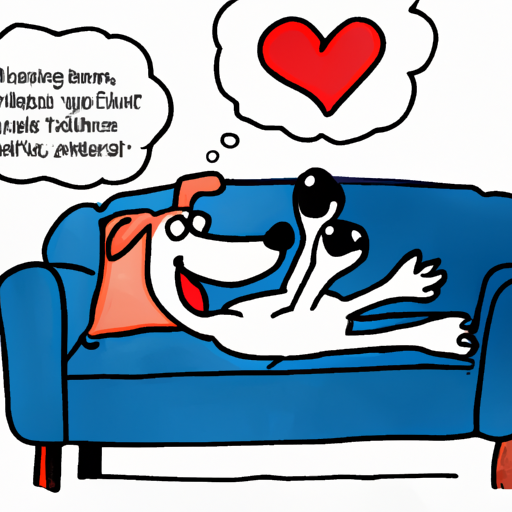Hi there, fellow dog lover! If you’re reading this, there’s a high chance that your furry friend loves to snuggle. Ever wondered why?
Understanding the Dog’s Nature
First and foremost, it’s essential to understand that dogs are pack animals by nature. This means they love to be in groups. This is rooted in their history of living in packs in the wild, where they relied on one another for survival.
Here’s a brief look at how dogs’ social behaviors have evolved:
- Survival in Packs: In the wild, dogs hunted in packs, providing them better chances of catching prey and protecting each other from predators.
- Warmth and Comfort: Dogs’ ancestors would snuggle together for warmth during cold nights and to feel secure.
- Social Bonding: Snuggling also served as a form of social bonding, reinforcing the pack hierarchy and fostering relationships.
Thus, when your dog snuggles up to you, it might be tapping into these primal instincts. They view you as a vital part of their pack and want to bond with you.
The Role of Domestication
While the pack mentality plays a big role, it’s not the only reason why dogs love to snuggle.
Through domestication, dogs have evolved to become more emotionally attuned to humans. They have learned to understand and respond to our emotions. When they snuggle, it’s partly because they can sense that it makes us happy and helps to build a stronger bond.
Here are some key ways domestication has influenced dogs’ snuggling behavior:
- Dependency: Domestic dogs depend on humans for food, shelter, and safety. Snuggling can be a way of showing gratitude and affection.
- Comfort: Like us, dogs seek comfort and security. Being close to their human gives them a sense of safety.
- Affection: Dogs have the ability to form deep emotional bonds with their humans. Snuggling is one way they express this love and affection.
The Impact of Breed and Personality
Not all dogs are born snugglers. Some breeds are more likely to snuggle than others due to their genetic predispositions. Lap dogs and companion breeds, for instance, have been selectively bred over generations to be close to their humans.
Here’s a table of some popular breeds known for their snuggling tendencies:
| Breed | Size | Temperament |
|---|---|---|
| Cavalier King Charles Spaniel | Small | Gentle, affectionate |
| Bichon Frise | Small | Playful, curious |
| Labrador Retriever | Large | Outgoing, even tempered |
| Golden Retriever | Large | Intelligent, friendly |
Remember, this is not a hard and fast rule. Individual personalities also play a significant role. Just like people, dogs have unique personalities. Some are more outgoing and love to be close to their humans, while others may be more independent.
Snuggling as a Form of Communication
Finally, snuggling can be a form of communication. Dogs can’t express feelings through words, so they use body language and behavior instead. By snuggling, your dog could be trying to tell you something.
Here are a few possible messages your dog might be trying to convey:
- I trust you: Trust is a big part of dog-human relationships. If your dog snuggles with you, it’s a sign that they feel safe and secure with you.
- I’m comfortable: A relaxed, snuggling dog is usually a happy dog. It shows they’re comfortable in their environment.
- I need something: Sometimes, dogs may snuggle up when they’re not feeling well or need something, like food or a bathroom break.
Frequently Asked Questions
Why does my dog like to snuggle in bed?
Dogs often associate bed-snuggling with warmth and comfort. It’s also a way for them to bond with their humans and feel safe.
Why does my dog not like to snuggle?
Some dogs may not like to snuggle due to their breed, personality, or past experiences. If your dog doesn’t enjoy snuggling, it’s essential to respect their boundaries.
Can I train my dog to snuggle?
While you can’t force a dog to snuggle, you can create a cozy environment and encourage positive associations with snuggling by rewarding your dog with treats and praise.
Is too much snuggling bad for my dog?
While snuggling is generally positive, too much can lead to over-dependency. It’s essential to balance snuggling with independent play and activities.
Remember, every dog is unique, and their desire to snuggle can depend on various factors, including their breed, personality, and experiences. But one thing’s for sure – when your dog snuggles up to you, it’s a sign of love, trust, and affection. So, enjoy those cuddly moments!



